Photos of my plant, the Brazilian plant and the drawing are enclosed so you can see my problem.
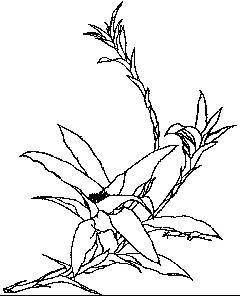
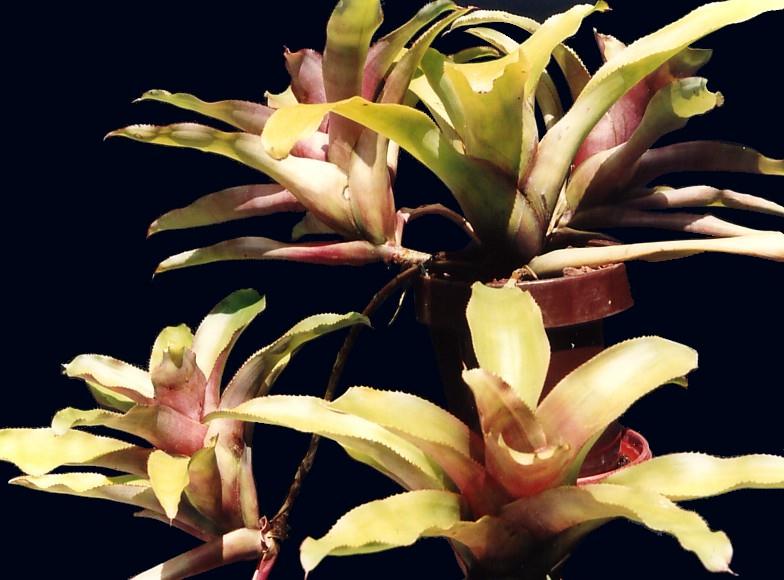
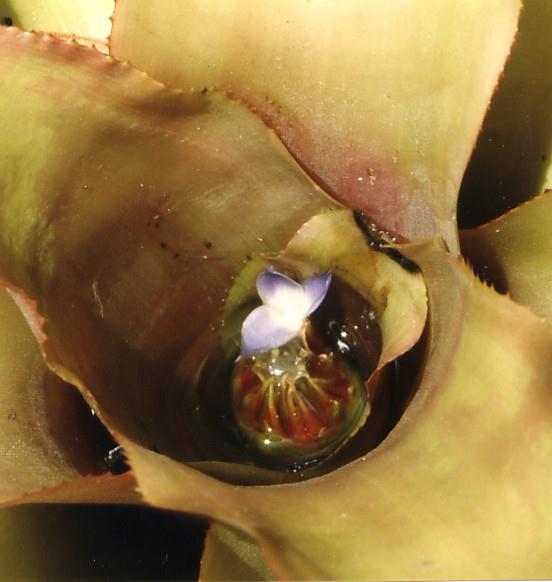
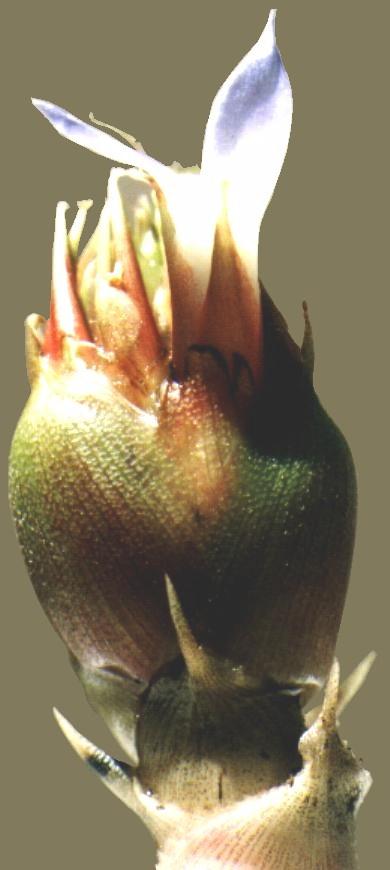
This all started for me in the 1980’s when I acquired a plant from Ruby Ryde called Neoregelia sapiatibensis which I did not know much about because it had appeared in no literature. Coming from Ruby I felt it had to be a species. When it flowered I took photos and dissected the flower and took notes for ‘later on’!
In 1992 I was surprised to read the following and my plant certainly agreed with the drawing.
In the late 1990’s I was able to obtain the original description of Neoregelia sapiatibensis in Latin and Portuguese which I duly translated so you will now see it for the first time, below, in English.
In October 2009 I found out about a website being run for the Brazilian Bromeliad Society, SBBr and increased my knowledge by referring to the photographs they have there. Note that there is a link to this website on our very own Bromeliads in Australia.
Here, Neoregelia sapiatibensis had a much redder centre on flowering to what I was used to. Referral to Harry Luther divulged that Marie Selby Botanic Gardens had several clones of this species and there was variation in the intensity of the red centre even though this is not mentioned in the description.
See www.vivquarry.com/ivopenna/index.html
There is one small problem in that Ken Woods has a plant also from Ruby that has red tips to the leaves which have strong spines suggesting that seed has been grown from N. “scandens” but a little foreign pollen has crept in. Investigations have revealed that in the 1980’s Ruby saw Neoregelia scandens on the BSI seed list and because she had never heard the name sent for a packet. These were grown on and because of Harry Luther’s article the name was changed to N. sapiatibensis.
The 1980’s was when I started getting seed from the same source when Diane Pippin held the reins. She was a five foot nothing dynamo! This was when I started my crusade to get the source of the seeds advised because I was getting hybrids when I was after species. The hybrid problem seemed more prevalent with seed from Florida. Needless to say, my request for such data remains unanswered to this day. Now you know why these days I deal direct with the actual seed collector where at least I can follow Bill Morris’s credo “ Analyse your results!”
Photos of my plant, the Brazilian plant and the drawing are enclosed so you can see my problem.




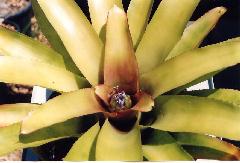
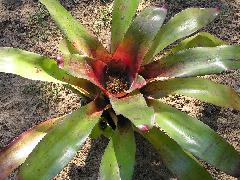
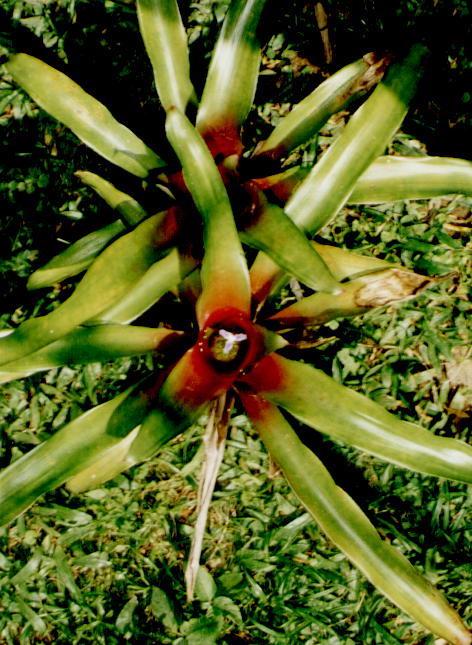
Plant flowering ca. 40cm high, stoloniferous, stolons ca. 40cm long,
Leaves many, ca. 35cm long, ligulate, rigid, forming a rosulate inflated base funnelform, 12cm long,
Sheath sub-elliptic, ca.8cm long, max. width 5cm, both sides whitish, punctate brown lepidote,
Blades sub-linear ca. 27cm long, max width ca. 4cm, tip acute apiculate, both sides green or reddish, upper side inconspicuous lepidote, underneath dense punctulate white lepidote, margins dense spined, spines ca. 1mm long, pointing upwards, dark purple, 3mm apart.
Scape 30mm long, 7mm diam.,
Scape bracts foliaceous, toothed, long apiculate, white, both sides punctate brown lepidote,
Involucral bracts 35mm long, ovate, acute, apiculate, membranaceous, green or reddish, entire, closely nerved,
Inflorescence simple, sub-globose, top flattened, 30mm diam.,
Floral bracts narrow lanceolate, 30mm long, 8mm wide, green or reddish, entire, towards the tip slightly keeled, tip spined, equalling the middle of the sepal.
Flowers with pedicel 40-50mm long,
Pedicel 5-10mm long, white.
Sepal slightly asymmetric, 20mm long, lanceolate, short acuminate, joined for 2mm, glabrous, middle bright red, above green.
Petal 32mm long, 3mm joined, blades 10mm long, ovate, acute, violet, spreading at anthesis,
Stamens 20mm long, Filament flattened, joined to petal for 6mm, white, Anthers lanceolate, 4mm long, apiculate, base blunt arrow shaped, dorsifixed above the base.
Ovary cylindric, 10mm long, white, Epigynous tube 1.5mm long, Placenta joined at the middle of the loculus, Ovules obtuse.
Type State of Rio de Janeiro, Barra de Sao Joao, leg. Luiz K Correia de Araujo no 40 26/9/1982 Holotype HB; Sao Pedro Aldeia, Morro Sapiatiba 300msm., leg Elton M C Leme no. 444, 23/2/1983. Paratype HB
Differs from N. farinosa in
Floral bracts much smaller, 30mm compared with 45mm.
Pedicels shorter , 5-10mm compered to 16mm.
Sepals short acuminate almost symmetric.
Leaf sheaths narrow elliptic not broad elliptic ovate, green not purple brown.